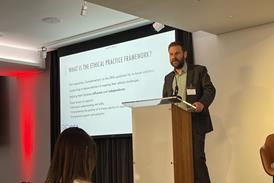Limited liability partnerships are still attractive for mid-sized law firms, says Fergus Payne.
It seems that, despite finding ourselves squarely in the era of the alternative business structure, the limited liability partnership appears to be alive and well, thank you very much.
Osborne Clarke has announced that it is planning to convert to an LLP, making it the latest firm to do so following Schilling’s conversion earlier this year and last year’s announcement by Mishcon de Reya.
Clearly, the LLP model still holds many attractions for mid-sized law firms. This comes despite much recent debate on the likely demise of the partnership model and its replacement by incorporation as a limited company, accompanied by a tendency toward more corporate structures in the legal sector. In truth, there has been no real rush to move away from LLPs either in the legal or accountancy professions. It remains a tried-and-tested model combining flexibility with tax benefits suitable for traditional remuneration models that enable firms to retain and attract ‘big hitters’.
Most law firms were able to restructure to address the introduction of the new salaried member rules last year, and some of the all-equity models adopted as a consequence may in the longer-term actually serve to reinforce the very essence of the partnership culture. Likewise, many firms have already demonstrated that a more corporate governance structure can be accommodated within an LLP.
Although incorporation has proved attractive for some small firms and also for new entrants to the sector, the complexities of share ownership – not least on entry to and exit from the business – impose many practical implications for a straightforward swap of structure. Indeed, unless external ownership is contemplated, remaining as an LLP is no real deterrent to becoming an alternative business structure.
The legal sector continues to face many challenges, not least on the efficiency of delivering and pricing of services and competition from new entrants to the market. With that in mind, it is unlikely that radical reimagining of a firm’s operating structure will feature too highly on most firms’ growing list of management priorities. There is an inevitable degree of ‘if it ain’t broke, don’t fix it’ here, and rightly so.
Incorporation may continue for smaller firms and may be the model of choice for new entrants, but it is hard to foresee rapid movement away from the LLP model in the short-term.
Indeed, the LLP appears to be catching its second wind, and it is likely we have not seen the end of firms taking the plunge and converting to this structure, which has a proven track record of success and longevity.
Fergus Payne is a partner and joint head of the partnerships and LLPs team at Lewis Silkin






























No comments yet